Challenge 5: Data Driven Water Security and Safety
WaterBot: Empowering India’s New Decision Makers in the Water Sector with AI.
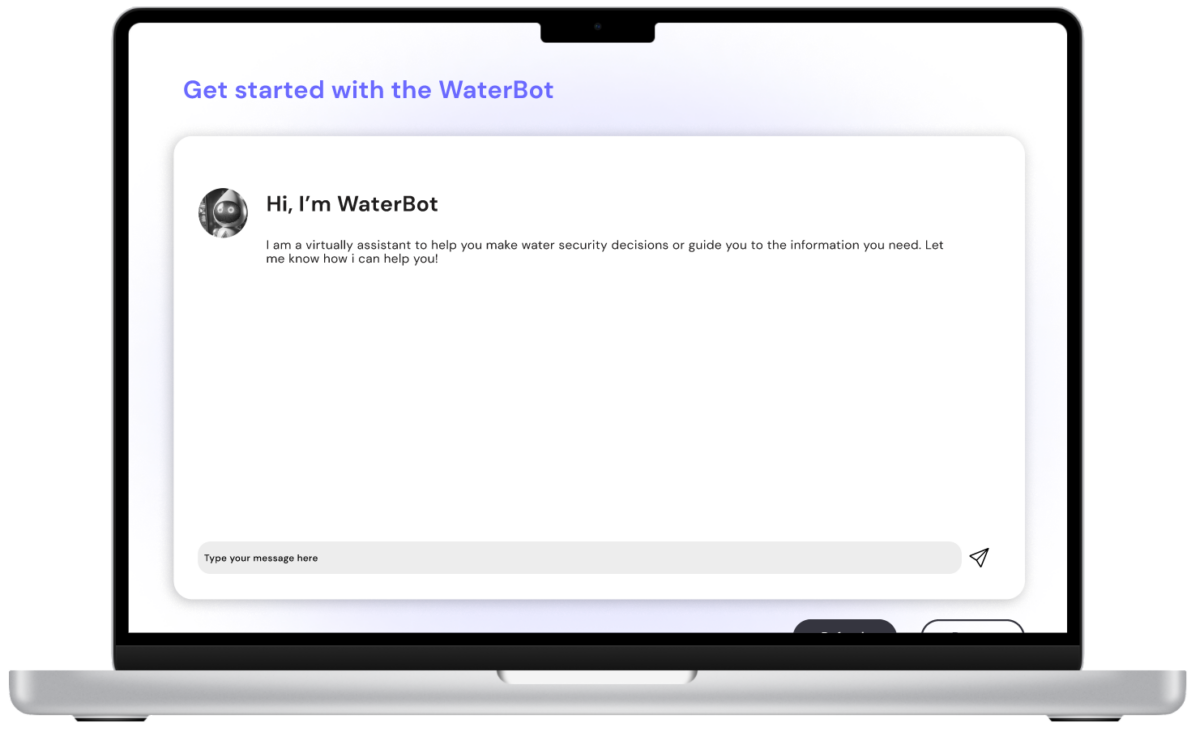
Introduction
Water Crisis: India is currently facing a major water crisis, one that threatens the lives, livelihoods, and the very future of millions. With its vast population, diverse geography, and climate variability, the country grapples with challenges ranging from severe water scarcity in arid regions to devastating floods during monsoon seasons. Overexploitation of groundwater, inadequate infrastructure, pollution of rivers and lakes, and the impacts of climate change have only exacerbated the situation.


Rapidly Pace of Change: Naturally, this topic has been a major focus in India. There is an almost constant stream of academic research, government reports, new datasets, NGO and charity projects, new technologies/implementations, and other sources of information. Statistics or reports even one year old are likely already out of date, making all but the most seasoned water security experts feel overwhelmed with the scope of the issue and the pace of change in India’s water space.
New Decision Makers: Meanwhile, India has placed an emphasis on decentralization and local governance. While many aspects of water security remain the responsibility of the local and state governments, increasing responsibilities are being placed on local governments like Panchayati Raj Institutions (PRIs) and Urban Local Bodies (ULBs). In order to adequately address this water crisis, it is extremely important that decision makers at every level of government are empowered to make well-informed and effective decisions for the well-being of their communities. This is the selected scope of our solution.
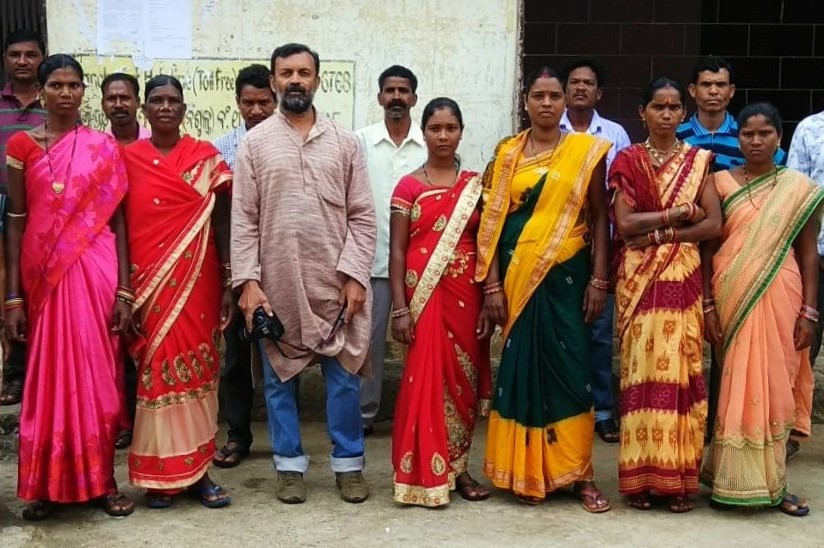
Solution
WaterBot is an AI-driven recommendation system designed to help decision-makers, researchers, innovators, and the general public easily find relevant information and solutions for water-related challenges in India. It simplifies the process of searching through large amounts of data, providing users with tailored content quickly and efficiently.
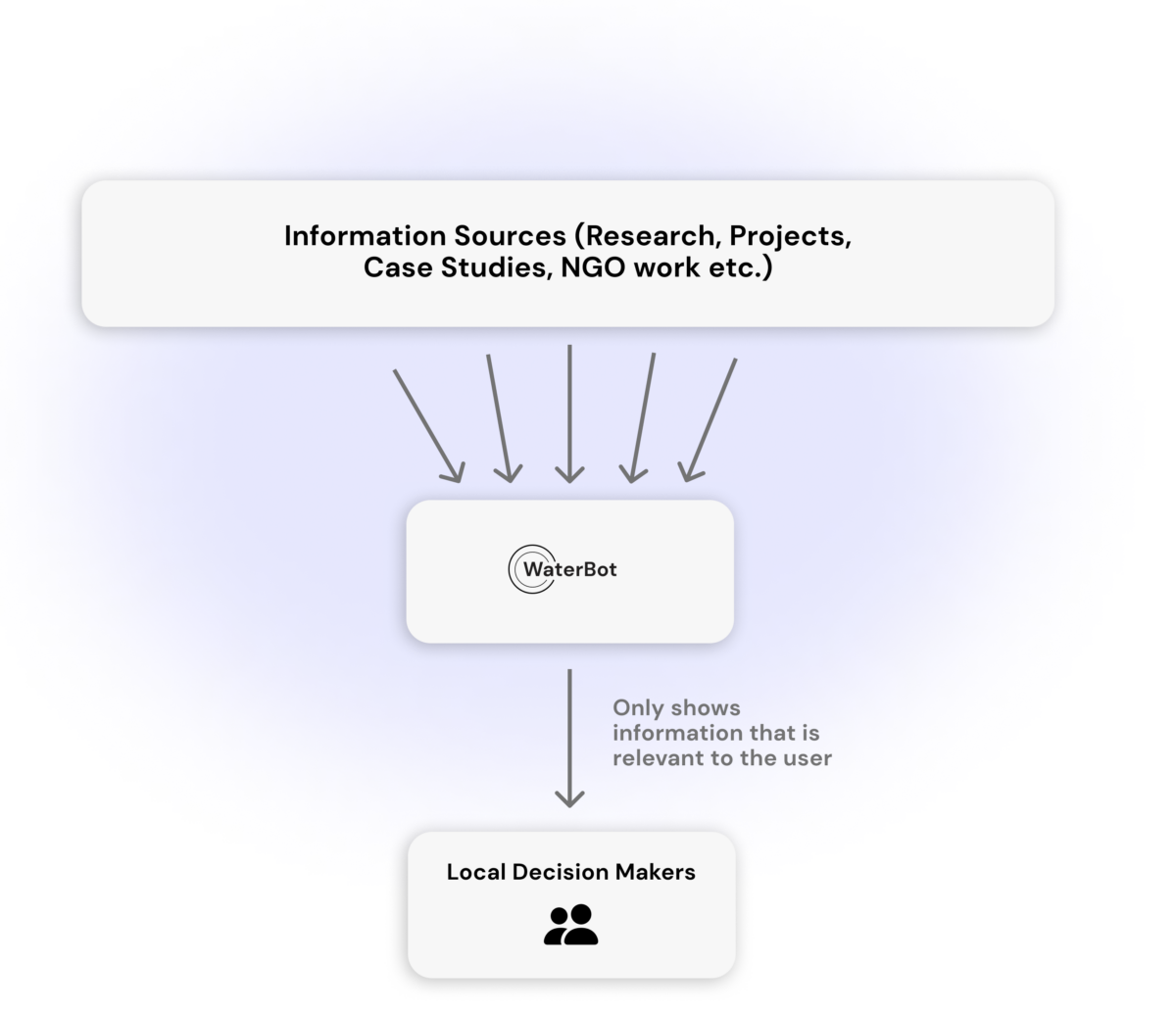
How the System Works
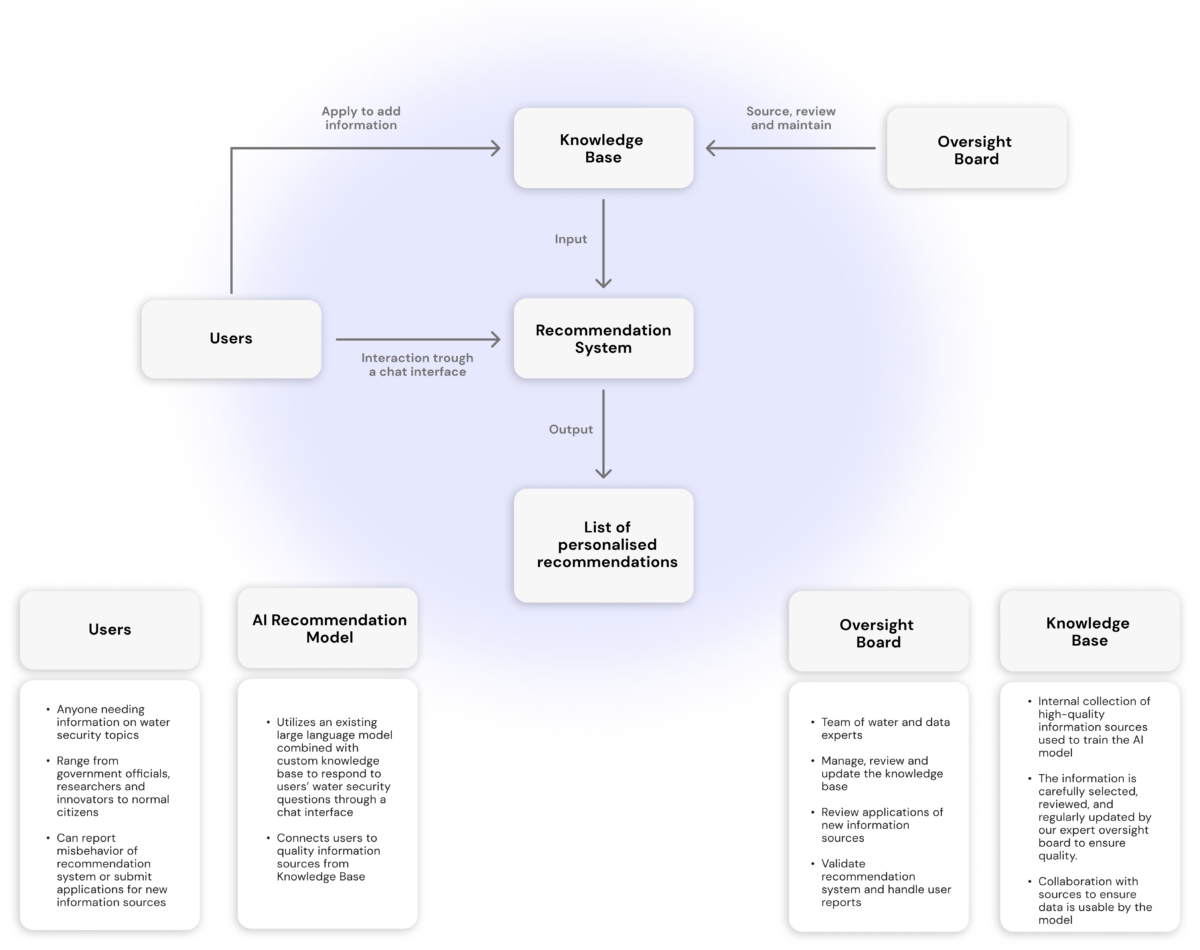
Open content contribution: Our platform also allows researchers, innovators, and any other stakeholders to submit their solutions or research. These submissions are reviewed by our experts before being added to the knowledge base, ensuring WaterBot remains up-to-date, inclusive, and relevant.
The WaterBot will be featured on a dedicated website that not only provides access to the WaterBot itself but also offers detailed information on it as well as a portal for submitting research, case studies, and innovative solutions. This centralized online platform facilitates easy interaction with the system, allows users to explore its functionalities, and encourages valuable contributions. Looking ahead, WaterBot could be integrated into additional websites and platforms, broadening its impact and accessibility.
Prototypes
Interactive WaterBot
To the right is a rough prototype of the AI WaterBot, built using Microsoft Copilot Studio. It currently draws from a limited set of hand-picked knowledge sources to answer user questions, but can also rely on the copilot’s underlying knowledge for questions not addressed by the provided sources.
This prototype demonstrates how the AI can effectively search through provided sources and present relevant information to end users. It also shows how the final product’s usefulness will very much depend on the quality and variety of information sources provided.
We recommend you test the model yourself with water-related questions of your own, or use some of the example questions below!
- What are some ways to combat groundwater salinification in my village?
- Our city loses a lot of water through leaky pipe infrestructure, what can we do to address this?

Interactive Container Website Prototype
This clickable Figma prototype represents the user interface and experience of our website. It provides a visual and interactive preview of how users will navigate the site, access the WaterBot, explore its features, and submit knowledge sources for review by the oversight board. This design aims to offer a seamless and engaging experience, ensuring users can easily interact with the system and make the most of its capabilities.
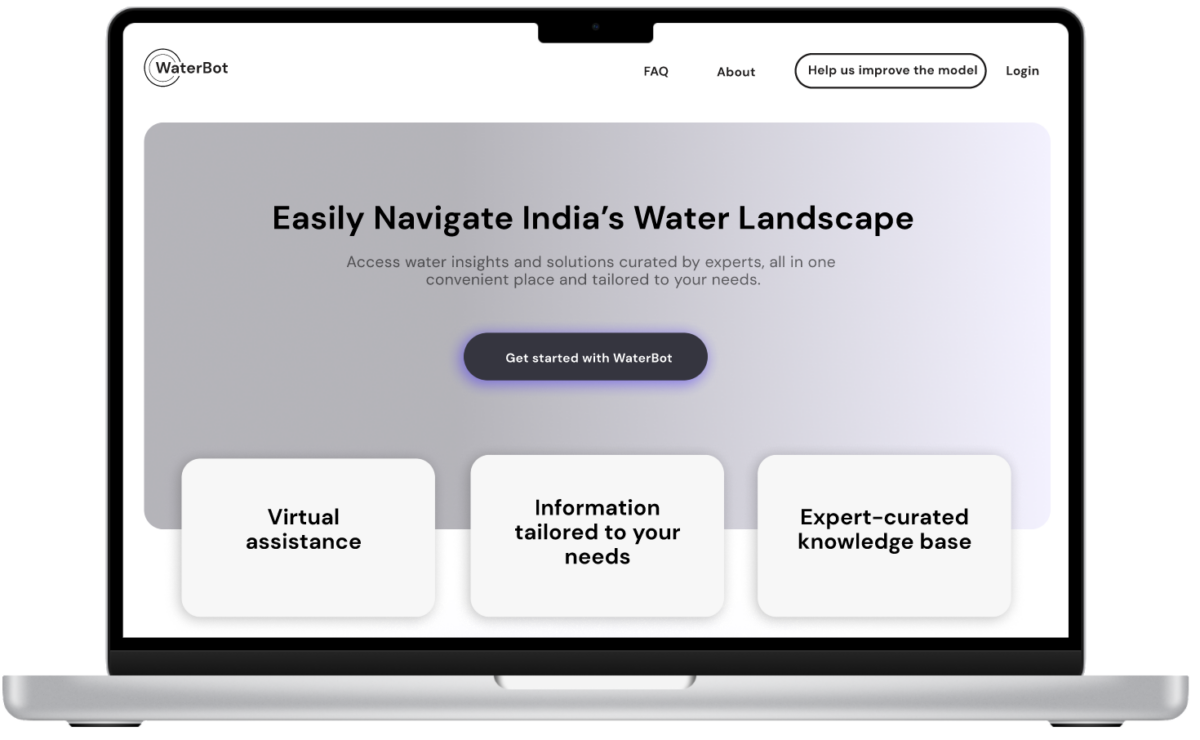
Impact

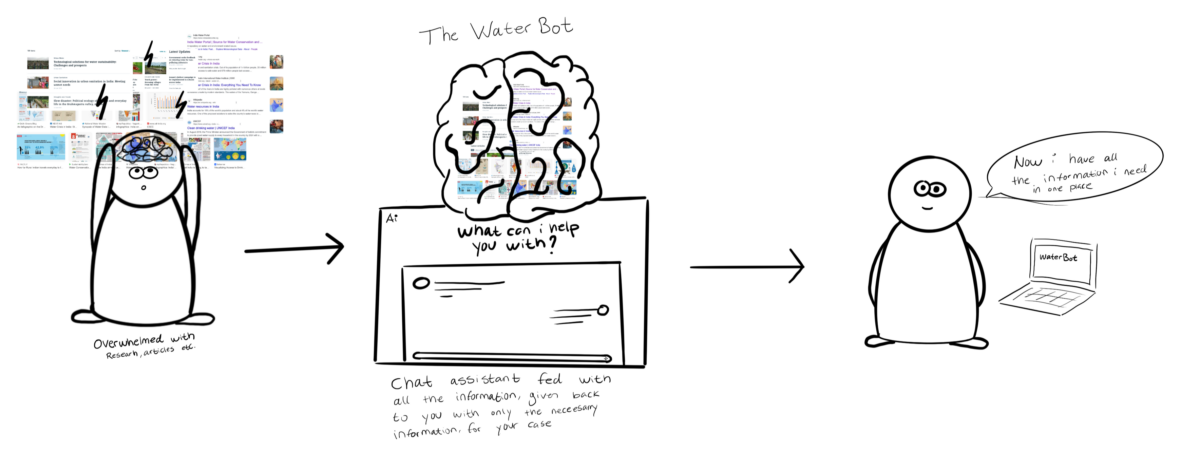
Business Case
The WaterBot platform will be government-owned, aligning it with both public and government interests. The government will recruit a dedicated team to develop and maintain the project. Additionally, the platform will draw on the expertise of existing government specialists in the water sector, providing a cost-effective and well-informed foundation for the project’s success.
Limitations and Externalities
It is important to acknowledge some limitations and considerations, particularly in the context of AI usage.
Usability Considerations:
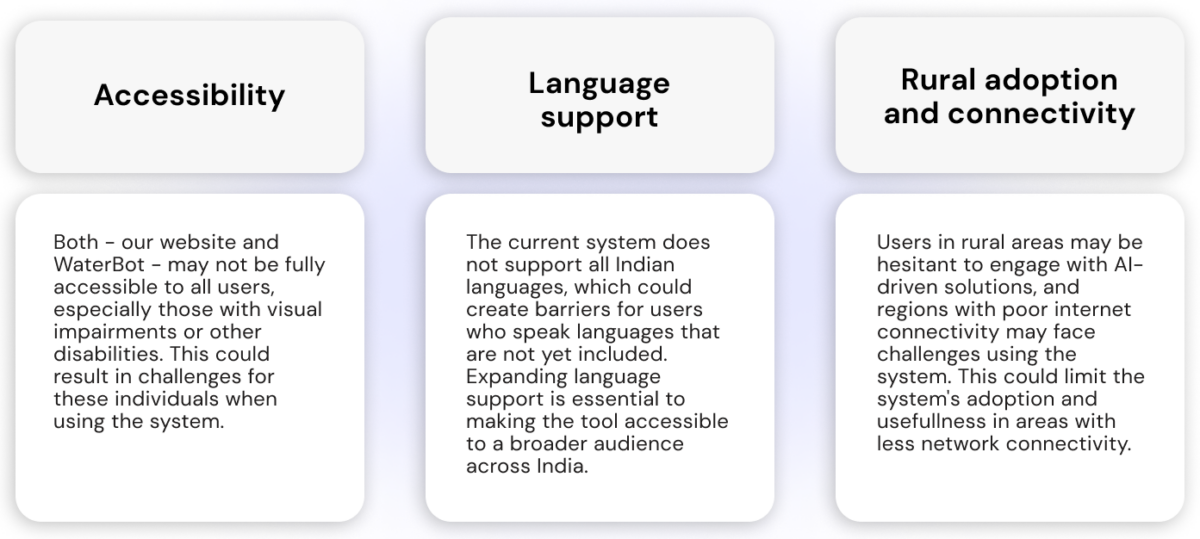
Recommendation Algorithm-Related Considerations:
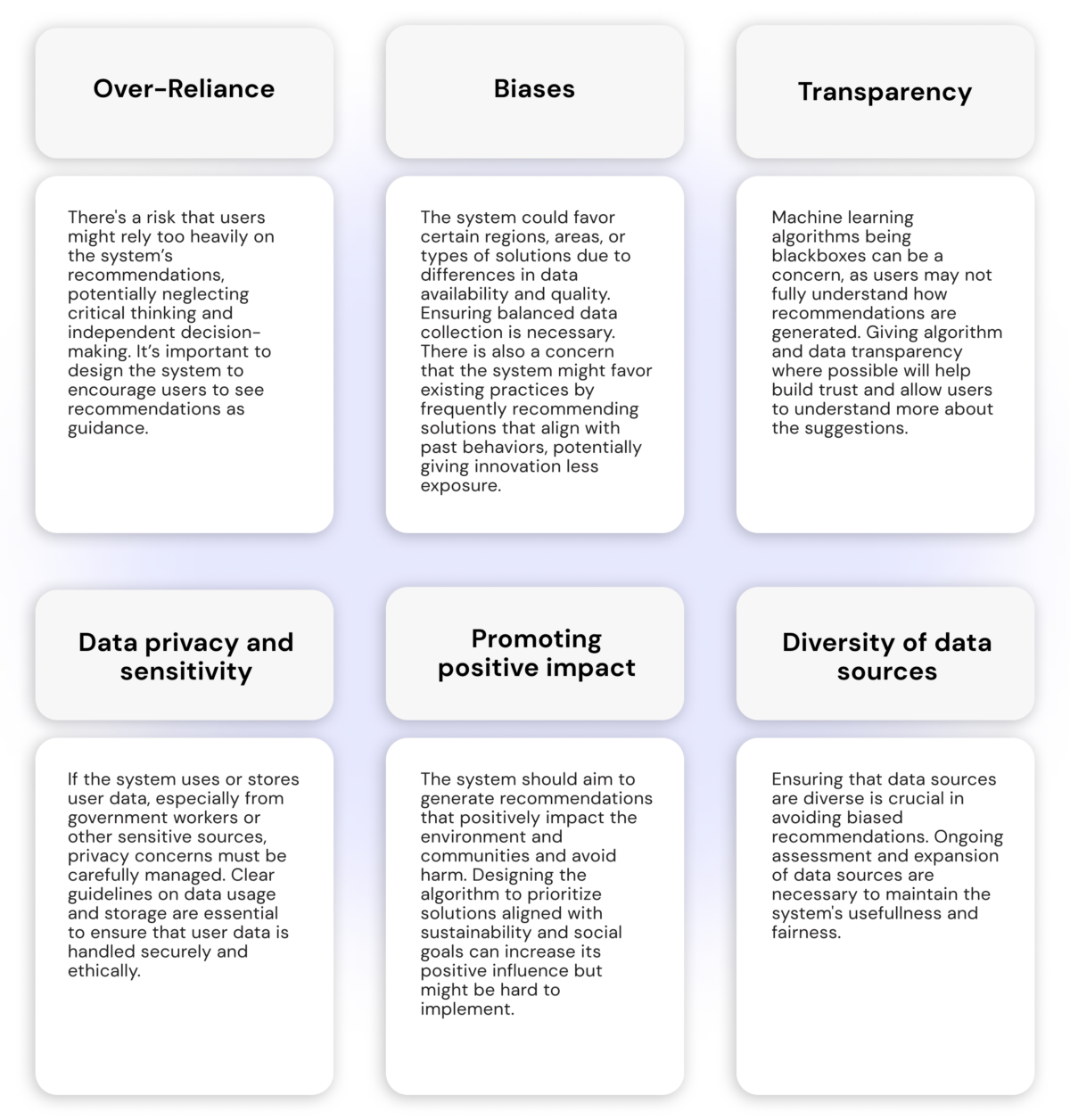
Roadmap
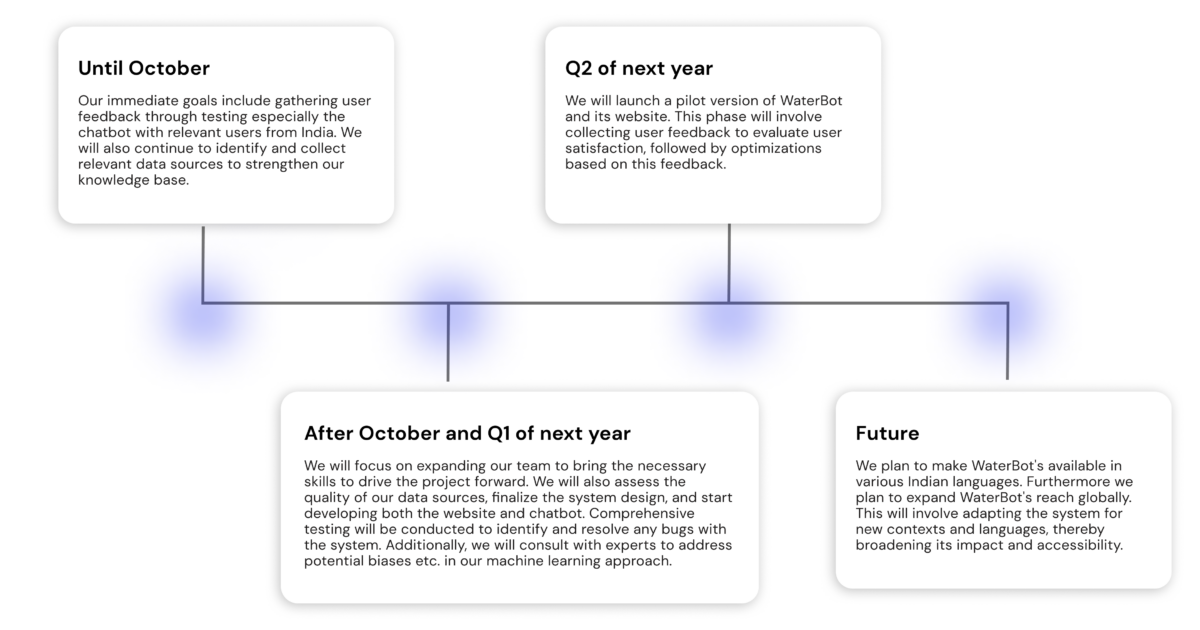
The Team

